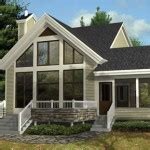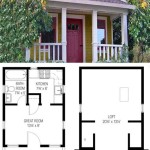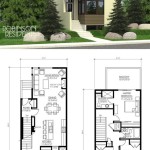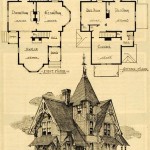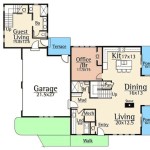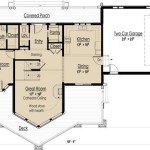Free Bat House Plans: Build a Home for Beneficial Creatures (PDF)
Bat houses provide crucial roosting habitat for bats, often compensating for the loss of natural roosting areas like old-growth forests and decaying trees. Constructing a bat house is a relatively simple and cost-effective way to contribute to bat conservation and benefit from the insect control services these creatures provide. Numerous free bat house plans are available in PDF format, offering detailed instructions for building various sizes and styles of bat houses suitable for different climates and bat species.
The increasing interest in bat conservation has led to the development and dissemination of these plans by organizations such as Bat Conservation International (BCI), state wildlife agencies, and various non-profit groups. These resources typically include step-by-step instructions, material lists, cutting layouts, and tips for attracting bats to the finished bat house. Understanding the factors that influence bat occupancy is crucial for success, and these plans often incorporate research-backed design principles optimized for bat comfort and security.
Before embarking on a bat house construction project, it is important to research the native bat species in the area and select a plan that is suitable for their needs. Different bat species have different roosting preferences, affecting factors such as the size of the roosting chambers, the surface texture of the interior, and the overall dimensions of the bat house.
Selecting the Right Bat House Plan
Choosing the appropriate bat house plan is the first critical step. Several factors influence the suitability of a plan, including geographic location, target bat species, and available resources. Consider these key aspects when selecting a free bat house plan in PDF format:
Geographic Location: Different regions support different bat species. Some species prefer smaller, simpler bat houses, while others require larger, multi-chamber designs. Research the common bat species in the area and their specific roosting needs. Northern climates, for instance, may require larger bat houses with deeper chambers to provide adequate insulation during colder months. Warmer climates may benefit from designs that promote airflow and prevent overheating.
Target Bat Species: Determine which bat species are most likely to utilize a bat house in the area. BCI and local wildlife agencies can provide information on native bat species and their roosting preferences. Some plans are specifically designed to attract certain species, such as the little brown bat or the big brown bat. The size and configuration of the roosting chambers should align with the target species' needs.
Available Resources and Skill Level: Evaluate the resources required for the project, including tools, materials, and time. Consider the complexity of the plan and the builder's skill level. Some plans are more straightforward and require basic carpentry skills, while others involve more intricate construction techniques. Select a plan that is realistic and achievable based on available resources and expertise. Simpler plans are often a good starting point for beginners, while more experienced builders can tackle more complex designs.
Plan Specifics: Before commencing the build, carefully examine the selected plan. Key areas to look for include: dimensions of the bat house, the number of chambers, the type of wood to use (untreated rough-sawn cedar or pine is best), and whether or not there is a landing area. A proper landing area allows bats an easier place to enter and exit the bat house, as well as prevent them from scraping their wings on the way in or out.
Common bat house sizes range from single chamber to multi-chamber designs. Single-chamber bat houses are suitable for attracting smaller colonies, while multi-chamber bat houses can accommodate larger groups. The dimensions of the roosting chambers should be appropriate for the target species, typically ranging from ¾ inch to 1 inch in width. The type of construction is often the most important aspect. Properly constructed bat houses will keep bats safe from predators, high winds, and temperature fluctuations.
Essential Considerations for Bat House Construction
Proper construction techniques are essential for creating a bat house that is both durable and attractive to bats. Paying attention to detail during the construction process can significantly increase the chances of successful bat occupancy. Here are some crucial considerations for building a bat house:
Material Selection: Use untreated, rough-sawn lumber for the bat house's exterior and interior surfaces. Avoid pressure-treated wood or wood treated with preservatives, as these can be toxic to bats. Rough-sawn lumber provides a better grip for bats, allowing them to easily climb and maneuver within the roosting chambers. Cedar or pine are commonly recommended due to their durability and resistance to decay. Exterior grade plywood can also be used for the sides and roof, but ensure it is not treated with chemicals.
Surface Preparation: Roughen the interior surfaces of the bat house by scoring or scratching the wood. This provides bats with a better grip and makes it easier for them to cling to the roosting surfaces. Create horizontal grooves approximately ¼ inch deep and 1 inch apart using a saw or chisel. This textured surface is particularly important for young bats, which may have difficulty clinging to smooth surfaces.
Sealing and Ventilation: Seal all seams and joints to prevent drafts and maintain a consistent temperature inside the bat house. Use caulk or weather stripping to close any gaps that could allow cold air or rain to enter. Proper ventilation is also important to prevent overheating, especially in warmer climates. Leave a small gap at the bottom of the bat house to allow for airflow. Consider adding ventilation slots near the top of the bat house in hot, humid areas.
Roofing: Ensure the roof is watertight to protect the bats from rain and snow. Use roofing felt or shingles to create a durable and weather-resistant roof. Extend the roof overhang to provide additional protection from the elements. The roof should also be angled to allow water to drain away from the entrance of the bat house.
Assembly and Fasteners: Use screws rather than nails to assemble the bat house. Screws provide a stronger and more durable connection. Use galvanized or stainless steel screws to prevent rusting. Countersink the screws to prevent them from protruding and causing injury to the bats. Ensure all edges are smooth and free of splinters.
Painting or Staining (Optional): Most plans suggest painting or staining the bat house to control interior temperature. It is recommended to use dark colors in cooler climates and lighter colors in warmer climates. Use non-toxic, water-based paints or stains. Avoid using oil-based products, as they can emit harmful fumes. Apply the paint or stain sparingly and allow it to dry completely before installing the bat house.
Successful Bat House Installation and Maintenance
The location and mounting of a bat house are critical factors in determining its success. Even the best-constructed bat house will not attract bats if it is not properly installed. Consider these essential aspects for successful bat house installation and ongoing maintenance:
Location: Mount the bat house in a location that receives at least six hours of direct sunlight per day, especially in cooler climates. Southern exposure is generally preferred. Avoid locations that are heavily shaded or exposed to strong winds. Bats prefer warm, sunny locations that allow them to maintain their body temperature. Ideally, the bat house should be located near a water source, such as a stream or pond. Bats require access to water for drinking and foraging. Mounting the bat house near a natural habitat area, such as a forest or field, can also increase its attractiveness to bats.
Height: Mount the bat house at least 12 to 20 feet above the ground. This height provides protection from predators and allows bats to enter and exit the bat house easily. Use a sturdy pole or building to mount the bat house securely. Avoid mounting the bat house on trees, as trees can provide access for predators and make it difficult for bats to fly in and out.
Mounting Method: Secure the bat house firmly to the mounting structure to prevent it from swaying in the wind. Use sturdy brackets or bolts to attach the bat house to a pole or building. Ensure the bat house is level and plumb. A wobbly or unstable bat house is less likely to attract bats. Consider using a breakaway system to prevent damage to the bat house during severe weather.
Maintenance: Inspect the bat house annually for damage or wear. Repair any cracks or holes to prevent drafts and water damage. Clean out the bat house periodically to remove guano (bat droppings). Guano can accumulate over time and reduce the available roosting space. The best time to clean the bat house is in the late fall or early winter, after the bats have migrated or entered hibernation. Wear gloves and a mask when cleaning the bat house to protect yourself from potential diseases. Check the mounting hardware and ensure the bat house is still securely attached to the pole or building.
Attracting Bats: While there is no foolproof method for attracting bats to a bat house, there are some strategies that can increase the chances of success. Plant native vegetation around the bat house to provide food and shelter for bats. Avoid using pesticides or herbicides near the bat house, as these can be harmful to bats. Keep outdoor lights to a minimum, as light pollution can disrupt bat foraging behavior. Be patient. It can take several years for bats to discover and occupy a new bat house.
By following these guidelines and carefully selecting a free bat house plan in PDF format, individuals can contribute to bat conservation and create a valuable habitat for these beneficial creatures. The effort invested in building and installing a bat house can yield significant rewards in terms of insect control and a greater appreciation for the role of bats in the ecosystem.

Bat Houses Mass Gov
:max_bytes(150000):strip_icc()/100things2do-f9ca25a5440247b3a11b57a2170c9f77.jpg?strip=all)
6 Free Bat House Plans

Build A Bat House Popular Woodworking

How To Build A Bat House
:max_bytes(150000):strip_icc()/woodlogger-c6ff0a74987c407aaec0e2ae26f49974.jpg?strip=all)
6 Free Bat House Plans

4 Ways To Build A Bat Box Wikihow

How To Build A Bat House

How To Build A Bat House Lee Valley Tools

39 Free Diy Bat House Plans To Shelter The Natural Pest Control

How To Make Rocket Box Bat Houses For Your Backyard Pith Vigor By Rochelle Greayer
Related Posts

